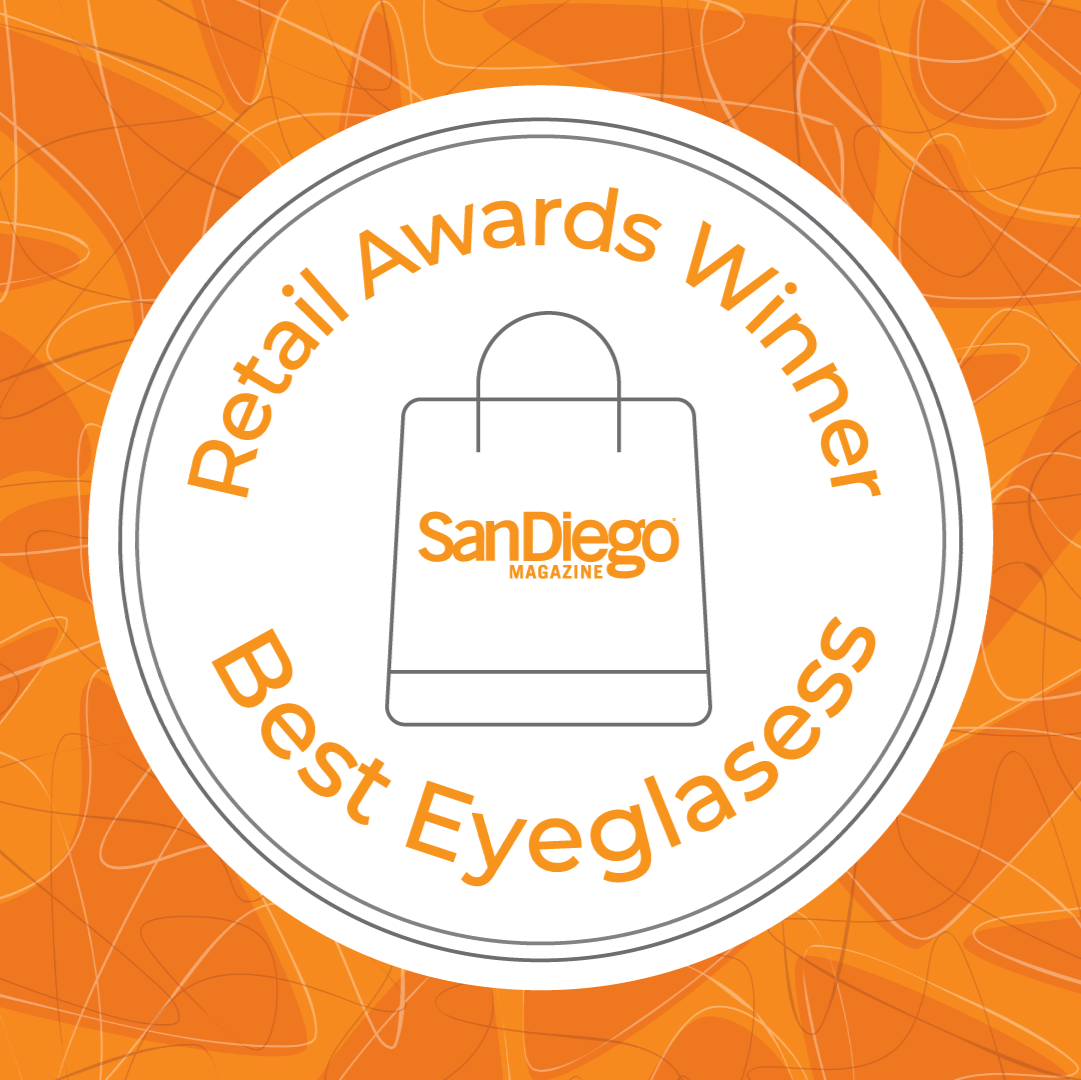Seasonal Allergies and Eye Health: Coping Strategies

Read time: 5 minutes
Seasonal allergies, also known as hay fever or allergic rhinitis, affect a substantial portion of the global population. These allergies typically occur in response to airborne allergens, with symptoms varying based on geographic location, climate, and the specific triggers present.
These allergies bring a range of challenges that extend beyond the typical sneezing and runny nose. Among the notable impacts of seasonal allergies are those on the eyes, leading to a condition known as allergic conjunctivitis.
Let's explore the intricate relationship between seasonal allergies and eye discomfort. We'll examine the historical context of allergic reactions, the contemporary understanding of their impact on eye health, and practical and effective coping strategies to ensure clear and comfortable vision.
Allergic Reactions Date Back Centuries
Allergic reactions to pollen and other environmental triggers have likely been a part of human history, with descriptions of symptoms dating back centuries. However, the understanding of the specific immune mechanisms and their impact on eye health has evolved more recently.
In the 19th and 20th centuries, as the field of immunology advanced, scientists began to unravel the complexities of allergic reactions. The discovery of histamine and its role in allergic responses laid the foundation for contemporary allergy treatments. Researchers, with a focus on eye health, explored how allergens induce discomfort, itching, redness, and other eye-related symptoms.
Today, seasonal allergies are prevalent worldwide, affecting millions of people. The World Health Organization (WHO) reports that allergic rhinitis is a significant health concern, with increasing prevalence in both developed and developing countries.
The primary culprits are pollen from trees, grasses, and weeds. When these allergens come into contact with your eyes, they can lead to a condition known as allergic conjunctivitis.
Read one of our blogs to understand the different types of conjunctivitis.
What Causes Seasonal Allergies?
Seasonal allergies occur when your immune system overreacts to harmless substances, treating them as threats. In the case of eye allergies, the immune response is directed at allergens such as pollen, triggering the release of histamine and other chemicals.
The timing and severity of seasonal allergies vary based on geographic factors. In temperate climates, spring and fall often bring heightened pollen levels, while warmer climates may experience year-round allergen exposure.
Certain regions have specific allergen profiles, influencing the types of pollen prevalent and the allergic response patterns observed. Allergy triggers include:
- Tree Pollen: Different tree species release pollen during specific seasons. Common allergenic trees include oak, birch, cedar, maple, and pine. Tree pollen is prevalent in the spring.
- Grasses: Grasses such as Bermuda, Timothy, and Kentucky bluegrass produce allergenic pollen during late spring and early summer.
- Weeds: Ragweed is a notorious weed that releases abundant pollen in late summer and early fall, causing a significant spike in seasonal allergy symptoms.
- Dust Mites: Dust mites are microscopic creatures that live in household dust. Their waste particles and body fragments can become airborne, triggering allergic reactions in sensitive individuals.
- Pet Dander: Proteins found in the skin cells, saliva, and urine of pets, especially cats and dogs, can be potent allergens. These proteins become airborne and cause allergic reactions when inhaled.
- Airborne Irritants: Air Pollution: Exposure to high levels of air pollution, including particulate matter and other pollutants, can exacerbate allergy symptoms and trigger allergic reactions.
- Cigarette Smoke: Tobacco smoke can aggravate respiratory allergies and worsen symptoms in individuals with seasonal allergies.
- Cross-Reactivity: Food-Pollen Cross-Allergies: Some individuals may experience cross-reactivity between certain foods and pollen allergens. For example, those allergic to birch pollen may also react to certain fruits and vegetables like apples, cherries, and carrots.
- Climate and Geographic Factors:
- Climate Variation: Different climates and geographic regions have distinct allergen profiles. For example, individuals living in warmer climates may experience prolonged allergy seasons, while those in cooler climates may face shorter but more intense allergy seasons.
- Urban vs. Rural Environments:
Urban areas may have higher concentrations of certain allergens, such as pollution, contributing to increased allergy prevalence.
- Genetic Predisposition: People with a family history of allergies are more likely to develop seasonal allergies. Genetic factors play a role in determining one's susceptibility to allergic reactions.
Common Symptoms of Allergic Conjunctivitis
- Itching: One of the hallmark symptoms of allergic conjunctivitis is itching, which can be intense and persistent.
- Redness: The eyes may appear red or bloodshot due to increased blood flow and inflammation.
- Watery Eyes: Excessive tearing is a common response to the irritation caused by allergens.
- Swelling: The conjunctiva, the thin membrane covering the white part of the eye, may swell, causing puffiness.
- Sensitivity to Light: Some people may experience heightened sensitivity to light, known as photophobia.
Impact of Seasonal Allergies on Daily Life and Coping Strategies
Seasonal allergies can significantly impact the quality of life, affecting sleep, work productivity, and overall well-being. Eye symptoms, in particular, can be disruptive, causing discomfort and visual disturbances.
Untreated allergic conjunctivitis can lead to complications such as conjunctival scarring, corneal ulcers, and secondary eye infections.
Coping Strategies for Eye Allergies
- Avoidance Measures: Stay indoors during peak pollen seasons, typically early morning and late afternoon. Keep windows closed during high pollen counts. Use air purifiers with HEPA filters to reduce indoor allergen levels.
- Eye Protection: Wear sunglasses to shield the eyes from airborne allergens. Consider wearing wraparound glasses for added protection.
- Artificial Tears: Use lubricating eye drops or artificial tears to relieve dryness and flush out allergens.
- Cold Compresses: Apply cold compresses to reduce eye swelling and soothe irritation.
- Over-the-Counter Antihistamines: Oral antihistamines can help alleviate systemic allergy symptoms, including those affecting the eyes.
- Prescription Medications: In cases of severe eye allergies, prescription eye drops containing antihistamines or mast cell stabilizers may be recommended.
- Allergy Shots: Immunotherapy, or allergy shots, can be considered for individuals with persistent and severe allergies. This involves gradually exposing the immune system to allergens to build tolerance.
- Consultation with an Allergist or Eyecare Professional: If symptoms persist or worsen, seeking advice from a healthcare professional or your Urban Optiks Optometry eyecare professional is crucial for proper diagnosis and management.
The Takeaway
Seasonal allergies may impact how you experience the changing seasons, but with the right approaches, you can manage eye symptoms and have clearer vision. Understanding the link between seasonal allergies and eye health helps you take proactive steps for relief. By using avoidance tactics, protective measures, and suitable medications, you can minimize the impact of seasonal allergies on your eyes and enjoy each season with clear vision.
Share this blog post on social or with a friend:
The information provided in this article is intended for general knowledge and educational purposes only and should not be construed as medical advice. It is strongly recommended to consult with an eye care professional for personalized recommendations and guidance regarding your individual needs and eye health concerns.
All of Urban Optiks Optometry's blog posts and articles contain information carefully curated from openly sourced materials available in the public domain. We strive to ensure the accuracy and relevance of the information provided. For a comprehensive understanding of our practices and to read our full disclosure statement, please click here.


















